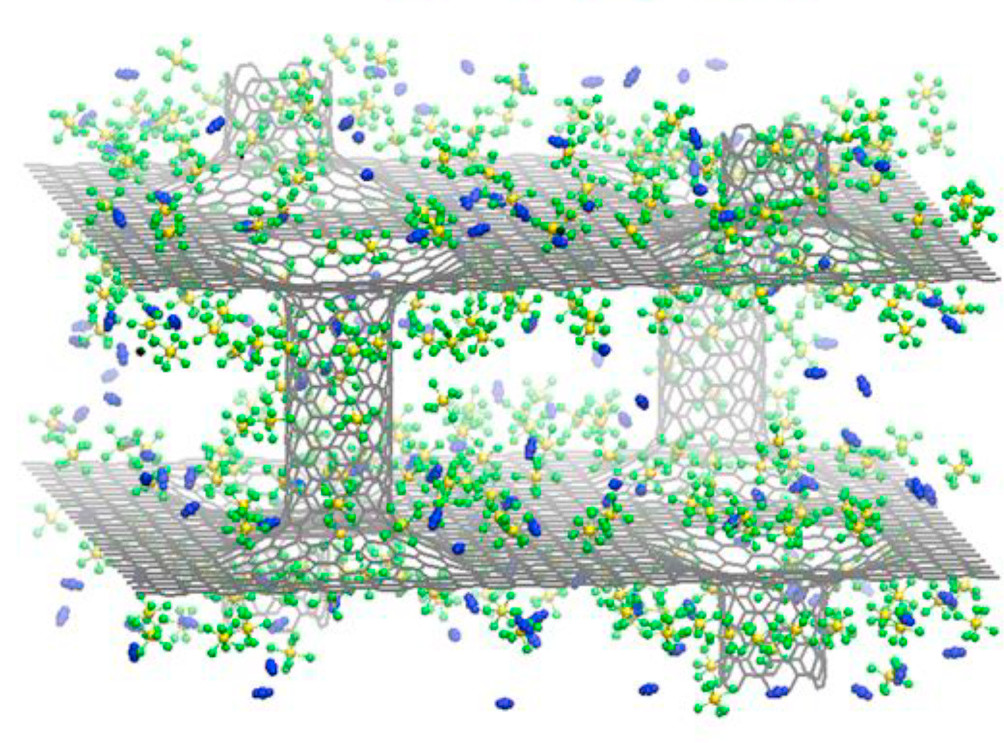DOI: 10.1016/j.micromeso.2020.110464
ABSTRACT
SF6 and SF6–N2 gas mixtures are well known insulators used in industry applications, but SF6 has to be recovered due to its high global warming potential. In this study, the adsorption of the pure SF6 and N2 fluids and the separation of their mixture with SF6:N2 = 1:9 composition, using three-dimensional porous carbon nanotube networks and pillared graphene materials has been studied by employing Monte Carlo and Molecular Dynamics simulations at ambient temperature and pressure up to 20 bar. The results obtained reveal a significant SF6 uptake and high adsorption selectivity for SF6 over N2, compared to the best performing materials in the literature.
The selectivity for SF6 decreases in the case of pillared graphene and strongly depends on the nanotube pillar and graphene layer distances. The saturation capacity of the investigated materials is also achieved at very different pressure ranges, as it has been reflected on the calculated adsorption isotherms. Due to this fact, the translational diffusion coefficients of the adsorbed SF6 and N2 molecules in each material are significantly different at ambient conditions. The results obtained might be used as a springboard towards the rational design of carbon-based materials for the capture of the very potent greenhouse gas SF6.


